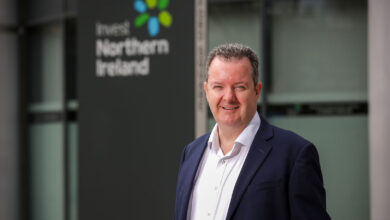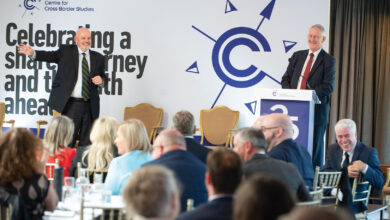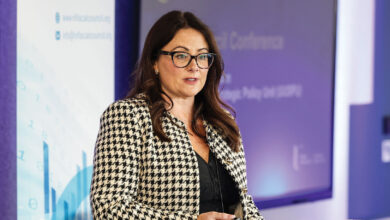Ballymena briefs Robinson and McGuinness
 Representatives from Ballymena Borough Council have met with First Minister Peter Robinson and deputy First Minister Martin McGuinness to discuss the borough’s regeneration and economic development.
Representatives from Ballymena Borough Council have met with First Minister Peter Robinson and deputy First Minister Martin McGuinness to discuss the borough’s regeneration and economic development.
The delegation was led by the Mayor, Alderman PJ McAvoy, and the Chair of the Economic Growth and Development Committee, Alderman Maurice Mills. The two aldermen updated the ministers on recent examples of local growth and investments in the borough from across Europe and the Far East.
“Ballymena is a great place with great people and the council is doing all it can to facilitate employment opportunities,” McAvoy said. “As part of this we are working to attract investment and support competitive local enterprise. We have seen strong votes of confidence in Ballymena and surrounding areas with many indigenous businesses such as Galgorm Castle Estates Developments, Galgorm Manor and Wrightbus investing significantly in the borough.”
McAvoy and Mills were accompanied by the council’s Chief Executive, Anne Donaghy. She added that elected members had been “working closely with all our partners” to support local businesses and attract foreign investment. This work would “build on Ballymena’s growing reputation as a major key economic hub in Northern Ireland and a significant player in Northern Ireland plc.”





